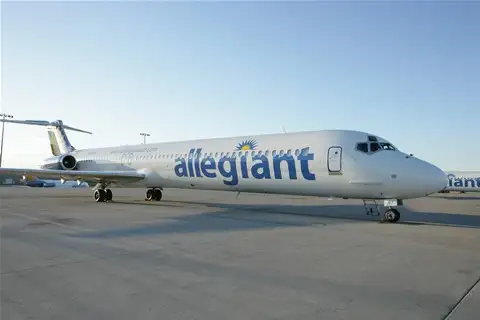
Want to receive deals like this every day? Subscribe to our free Deal Alert newsletter today!
In a recent letter to the Department of Transportation (DOT), Allegiant Airlines made a rather surprising admission. Here it is:
Allegiant is considering a new pricing option for use on its website: when making a purchase, consumers would be able to choose between a traditional “locked in” fare that would not fluctuate, and a lower fare that could change before the date of travel. That lower fare could be reduced further or could increase (up to a set maximum that would be clearly disclosed) depending on changes in fuel price between the booking and travel dates. This would be a non-compulsory alternative for consumers; it would provide them another option for potential substantial savings on their trip costs and would be clearly disclosed and explained prior to any purchase.
Presently, Allegiant says it could implement this sort of fee. But the consumer protections proposals put forth by the DOT last summer would ban the practice of post-purchase price increases. This is precisely why Allegiant is making its case (though the comment period for those proposals closed months ago).
And here is the crux of that case:
The potential to offer this alternative is especially important for Allegiant. First, even a slight change in fuel cost has a major financial impact on Allegiant, as it does on other air carriers (as the Department is aware). Second, Allegiant caters specifically to leisure travelers. This means, among other things, that a high proportion of Allegiant customers purchase their travel significantly in advance of their travel dates—in many cases months in advance—making it especially difficult for Allegiant to predict what the fuel price might be at time of travel. Preserving the ability for carriers to offer and consumers to choose between a locked-in price and a price that may change, within limits, based on the price of fuel, strikes an appropriate balance between the interests of consumers and the interests of carriers.
That last sentence is what really caught my eye. Does this sort of fare structure “strike an appropriate balance between the interests of consumers and the interests of carriers”? For consumers, it’s a game of chance—fares could go down, sure, but Allegiant wouldn’t be proposing this kind of fare if it were confident that fuel costs would trend lower any time soon. It seems unlikely that, barring a major collapse in global oil prices, those initial low fares would get much lower. Instead, this fare structure is a way for Allegiant to lure in customers with a low price, make the sale, and then charge whatever it says it needs to cover its fuel costs.
As with any clever airline idea, much depends on the execution. If the initial fluctuating fare is lower than the traditional “lock-in” fare by some meaningful amount—$25? $50?—and the maximum price on the fluctuating fare only exceeds the traditional fare by a reasonable margin, then perhaps it’s a risk worth taking. But the idea of “balance” seems false to me. This is a gamble, pure and simple, and as always, the old axiom holds true: The house always wins.
Readers, would you take a chance on a fluctuating fare, or do you prefer the certainty of locking in?
We hand-pick everything we recommend and select items through testing and reviews. Some products are sent to us free of charge with no incentive to offer a favorable review. We offer our unbiased opinions and do not accept compensation to review products. All items are in stock and prices are accurate at the time of publication. If you buy something through our links, we may earn a commission.
Related
Top Fares From
Today's Top Travel Deals
Brought to you by ShermansTravel
Porto to Lisbon: 7-Nt, Small-Group Portugal...
Indus Travels
 vacation
$1899+
vacation
$1899+
Greenland: Luxe, All-Incl. 11-Nt Exploration Small-Ship...
Swan Hellenic



Ohio: Daily Car Rentals from Cincinnati
85OFF.com





